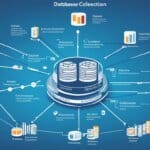Table of Contents
Raw data, also known as unprocessed data, is the initial form of data collected from various sources. It can be in different formats such as text, numbers, images, audio recordings, and videos. This data is often large and unorganized, making it difficult to analyze and extract meaningful insights from it.
Raw data serves as the foundation for data processing and analysis. Before it can be used, raw data requires further processing such as cleaning, organizing, and formatting to transform it into useful information. This processed data can then be stored in databases or data warehouses for future analysis and decision-making.
Understanding unprocessed data is crucial in the digital age where data-driven strategies and initiatives are becoming increasingly important. By harnessing the potential of raw data, organizations can gain valuable insights into customer behavior, market trends, and operational efficiency, among other crucial aspects of a business.
Join us as we delve deeper into the difference between raw data and processed data, how raw data is processed, and the value that raw data can bring to organizations. Stay tuned for the upcoming sections where we explore these topics in detail.
Raw Data vs. Processed Data
Raw data and processed data are two distinct forms of data that serve different purposes. Understanding the difference between these two types of data is essential for effective data processing, transformation, and organization.
Raw data refers to unprocessed and unstructured data collected directly from various sources. It is often messy and requires cleaning, organizing, and formatting to make it usable. Raw data can be in different formats such as text, numbers, images, audio recordings, and videos. This primary data serves as the input for data processing.
Processed data, on the other hand, is the transformed and structured data that has undergone data processing techniques. This data is organized, validated, and analyzed to extract meaningful insights and information. Processed data is easier to work with, as it is in a format that is suitable for analysis and decision-making. It provides valuable information as the output of data processing.
| Raw Data | Processed Data |
|---|---|
| Unprocessed and unstructured | Transformed and structured |
| Requires cleaning, organizing, and formatting | Organized, validated, and analyzed |
| Difficult to analyze and extract insights | Usable for analysis and decision-making |
| Serves as the input for data processing | Provides valuable information as the output |
Raw data is the foundation on which data processing, transformation, and organization take place. By cleaning, organizing, and formatting raw data, organizations can unlock its potential and derive meaningful insights. The processed data can then be further analyzed, visualized, and presented to facilitate decision-making.
How Raw Data is Processed
Raw data goes through a series of essential steps for transforming it into valuable information. Data processing techniques such as data cleaning, data formatting, and data analysis are employed to refine and make sense of raw data.
Data cleaning is a critical process that involves identifying and rectifying errors, removing duplicates, and eliminating irrelevant information from raw data. This ensures the accuracy and integrity of the data, enabling reliable analysis and decision-making.
Data formatting is another vital step in the data processing journey. It involves organizing and structuring the data to make it consistent and easy to work with. By standardizing the format and applying uniform criteria, data formatting enhances clarity and data quality.
“Data cleaning and formatting are crucial for transforming raw data into a usable format. These processes lay the foundation for accurate and meaningful analysis.”
Once the raw data is cleaned and formatted, it can be subjected to data analysis. Data analysis techniques ranging from simple spreadsheet analysis to complex business intelligence programs and machine learning algorithms are applied to extract valuable insights.
Data analysis involves identifying patterns, trends, and relationships within the processed data. By uncovering valuable information hidden within the data, organizations can gain deep insights into their operations, customer behavior, market trends, and more.
Types of Data Processing Techniques
Data processing techniques vary depending on the complexity of the analysis required. Here are some common techniques:
- Data mining: Extracting valuable patterns and information from large datasets.
- Statistical analysis: Applying statistical methods to interpret data and draw conclusions.
- Machine learning: Building models that can learn from data and make predictions or take actions.
- Text mining: Analyzing unstructured textual data to derive meaningful insights.
Data Visualization and Presentation
After data processing and analysis, the findings can be visualized and presented in various formats to facilitate decision-making. Visual representations such as charts, graphs, and reports help communicate complex data in a clear and understandable manner.
Data visualization allows stakeholders to grasp key insights at a glance, making it easier to make informed decisions based on the processed data. Additionally, visualizations enable effective communication and collaboration within organizations, allowing teams to align their actions with the data-driven insights.
| Data Processing Technique | Description |
|---|---|
| Data Cleaning | Removing errors, duplicates, and irrelevant information from raw data. |
| Data Formatting | Organizing and structuring data to ensure consistency and ease of analysis. |
| Data Analysis | Extracting insights, patterns, and trends from processed data. |
| Data Mining | Using algorithms to extract valuable patterns and information from large datasets. |
The Value of Raw Data
Raw data may not have immediate value, but when processed and analyzed, it unlocks immense potential for organizations. By gaining insights into customer behavior, market trends, and operational efficiency, businesses can make informed decisions that drive growth and success.
Storing raw data in databases or data warehouses creates a valuable repository for future analysis and decision-making. This allows organizations to access historical data and track changes over time. Through data analysis, patterns and trends can be identified, paving the way for predictive modeling and forecasting. These insights enable businesses to anticipate market demands and optimize strategies.
Data-driven decision-making is empowered by analyzing and transforming raw data. By harnessing the power of processed data, organizations can make informed choices that are backed by solid evidence. Whether it’s optimizing marketing campaigns, improving supply chain efficiency, or enhancing customer experiences, leveraging raw data is the foundation for success in a data-driven world.
FAQ
What is unprocessed data?
Unprocessed data, also known as raw data, refers to the initial form of data that is collected from various sources. It has not undergone any processing or transformation for use.
How is raw data different from processed data?
Raw data is the unprocessed and unstructured data collected directly from sources, while processed data is the transformed and structured data that has undergone data processing techniques.
What is the process of data processing?
Data processing involves cleaning the raw data by removing errors and irrelevant information, formatting the data to make it consistent and structured, analyzing the data to identify patterns and relationships, and visualizing the processed data for decision-making purposes.
What is the value of raw data?
Raw data holds immense potential for organizations when processed and analyzed. It provides insights into customer behavior, market trends, and operational efficiency. It enables data-driven decision-making and can be monetized through targeted marketing and personalized customer experiences.












